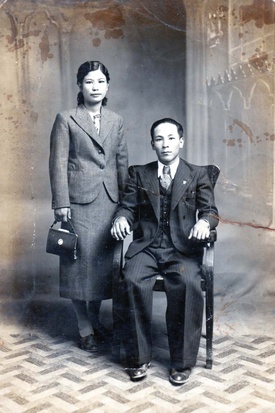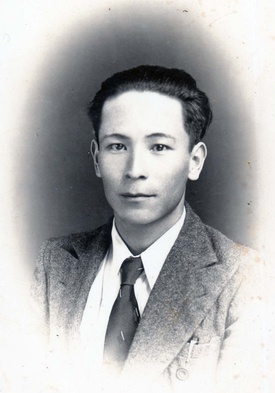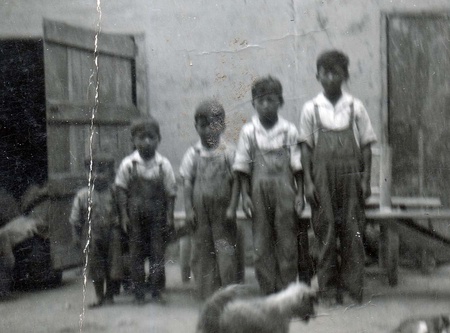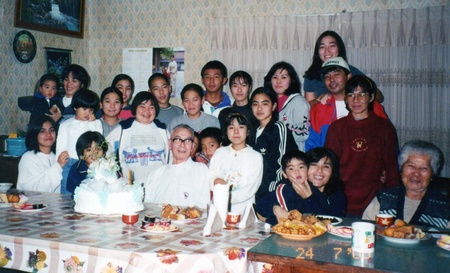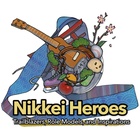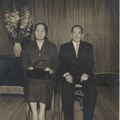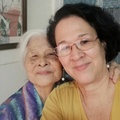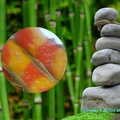April 3, 2019 is a very important date for us, we celebrate 120 years of Japanese Immigration to Peru, during this time immigrants crossed the Pacific who made a common history of these two nations. There are many important stories that represent it, they are well known to everyone, but there are others that were part of it almost anonymously, people who fought, worked and suffered until finally being part of this great country that welcomed them and all their descendants.
Today I want to dedicate this article to my father-in-law, a while ago I wrote about my mother-in-law , the love is very great, in addition to my gratitude, sometimes we are unintentionally unfair. My mother-in-law was extraordinary, she had a lot of charisma and was very sociable, but next to her was my father-in-law, always with a smile, he was of few words, one of those people who never seemed to get upset but, as they say, when that happened, everyone They ran even though he was short and all his children were much bigger than him, except for my wife. My father-in-law was called Sanra, known to many as Saburo, my mother-in-law was Haruko.
Like most ancient marriages among Nikkeis, it was arranged, most likely an agreement between the parents. Always jokingly, my mother-in-law said: “My children have all chosen their partners, so don't complain to me about anything.” She was born in the Hacienda Jesús del Valle, in Huaral, she had gone to Okinawa with her parents with the idea of returning, but after a while she was back in Peru, two sisters had stayed behind, fate and war made her For a long time he did not see his parents and brothers, because the entry of Japanese people into our country was prohibited due to the war. Finally, his parents and siblings had to go live in Argentina.
Saburo was born in Japan, as a child his parents traveled to Peru in search of a better future, while he stayed with an aunt who raised him. On the boat trip, which they say was very hard, his mother died (this is the information we have, but it could not be confirmed), so Saburo's coming was cut short for many years. Being young, he traveled to meet his father in Peru, he already had another commitment, he came like many to work in the fields. After a few years their marriage was agreed.
Saburo and Haruko had their first child at Hacienda Esquivel, my father-in-law worked as a laborer growing cotton until one in the afternoon and then worked on the small plot he rented. There they had four children, they were difficult times, the government assumed a policy against Japan and everything related to the country of our ancestors due to the war. They were stripped of everything, they were thrown away, leaving a small portion of land for them to survive, it was where they grew cabbage, cassava, cauliflower and then went to sell, work that Haruko and her father-in-law did.
They tried by all means to raise money, these were difficult times, they were told of an opportunity at the Hacienda San Agustín in Callao, together with other countrymen they ventured and managed to rent plots, in this way they remained neighbors until their last days. A Nikkei family that did not know them at that time was the one that helped them access that place, it is the way in which that camaraderie began to be felt on the ranch. This is where the remaining six children are born, including my wife, who was the last and only woman.
Families were large then, as they say now, there was no television yet. On the other hand, having a large family was a great productive force, of course initially it made everything more difficult, you had to feed a large family, but later this made progress faster economically. Difficult work, especially because the lease had to be paid with a quantity of quintals (old Spanish unit of weight) of the harvest, but at a very low price, which favored the landlord who, without working the land, managed to sell these at market price, this was part of the yanaconaje.
Yanaconaje was a system widely used in agriculture, it was used by the majority of the Japanese. The land was worked by paying rent in various ways: money, more work, more crops. This always implied the preferential sale and at the lowest price to the owner of the land. It was very little advantageous for the yanacona, but the Japanese managed to take advantage with forms of negotiation, and in some cases tanomoshi were used, which were finally used to lease more land and then be able to sublet it to other people, repeating the yanaconaje to others.
Saburo was a man who worked very hard from a young age, like many Japanese immigrants, a childhood suffered from being raised by his aunt and living away from his father, in a very poor Okinawa and having lost his mother on that trip that took them took him to that far away place, while he was still a child. Then coming to a strange land, to work with great effort, and then receiving the injustice of being stripped of the little he had and had achieved with great will, by a government that was very unjust at that time. It was starting again from scratch, it was one of the many tests that destiny had for him.
The Hacienda San Agustín welcomed many Japanese and their descendants, where they began a life together, the treatment of neighbors became like family, mutual help was common, even when there were harvests and crops they helped each other, not everything was work. They also met for big family events, camaraderie meetings to even form a sports club. At some gatherings, my father-in-law and other neighbors played his sanshin while the women danced to the rhythm of Okinawan music, surely longing for their origins, but all with great joy.
Saburo was short, but a person with many resources, like most immigrants, he had a multitude of skills, he fixed things. It must be taken into account that in the countryside they made all the facilities themselves, they built walls, roofs, made corrals for the animals, if something broke they had to figure out how to fix it. Over time they even became mechanics.
My father-in-law had very few words but a frank, sincere smile that welcomed you. I'm sure my wife inherited that smile from him. They say that when he got upset, all the children were afraid of him, just one scream was enough to put everyone on the sidelines, fortunately I never discovered that side of him. She surely must have had a strong character, she had to raise ten children, nine of them men. On the farm it seems that there was competition: who had the most children. The anecdotal thing was that very good soccer players came out, who went to different places representing the ranch, where the game was very hard, it seemed like life or death, managing to face players who later became professionals.
Just like my father-in-law, who was a typical Japanese immigrant who came to Peru in search of a better future, the majority had to work hard for it, with many trials along the way, enduring hatred, discrimination, dispossession, deception, mockery, but they kept going. There are many stories that we hear, we even find it very funny how the use of silos as bathrooms in the countryside, leaving the house to use them, I imagine with a smile doing all the juggling and being careful in the darkness of what one steps on. ; until I thought there was no toilet paper, using leaves, plants, then newspaper.
Also the simple life that they lived for a long time, what they ate, the most common thing was to hear that they ate a lot of sweet potato, which was on the farm. Eating an animal from the corral was quite an event because those were also for sale and if it was a pig, everything was used, from the fat to obtain lard, to the blood, which is very nutritious, the intestines, legs, hands (the latter for ashitibichi, with kombu seaweed), the ears (in mimiga sashimi); Nothing was wasted, in that aspect the Uchinanchu have been characterized by using everything from the pig. Difficult times that made them value every thing gained and think about the future so that each of their descendants never lack anything.
This is a small story of one of the many immigrants, a story very similar to many others and these are the ones that formed our Nikkei community in Peru, it has been 120 years, with five generations, searching for our own identity.
© 2019 Roberto Oshiro Teruya


